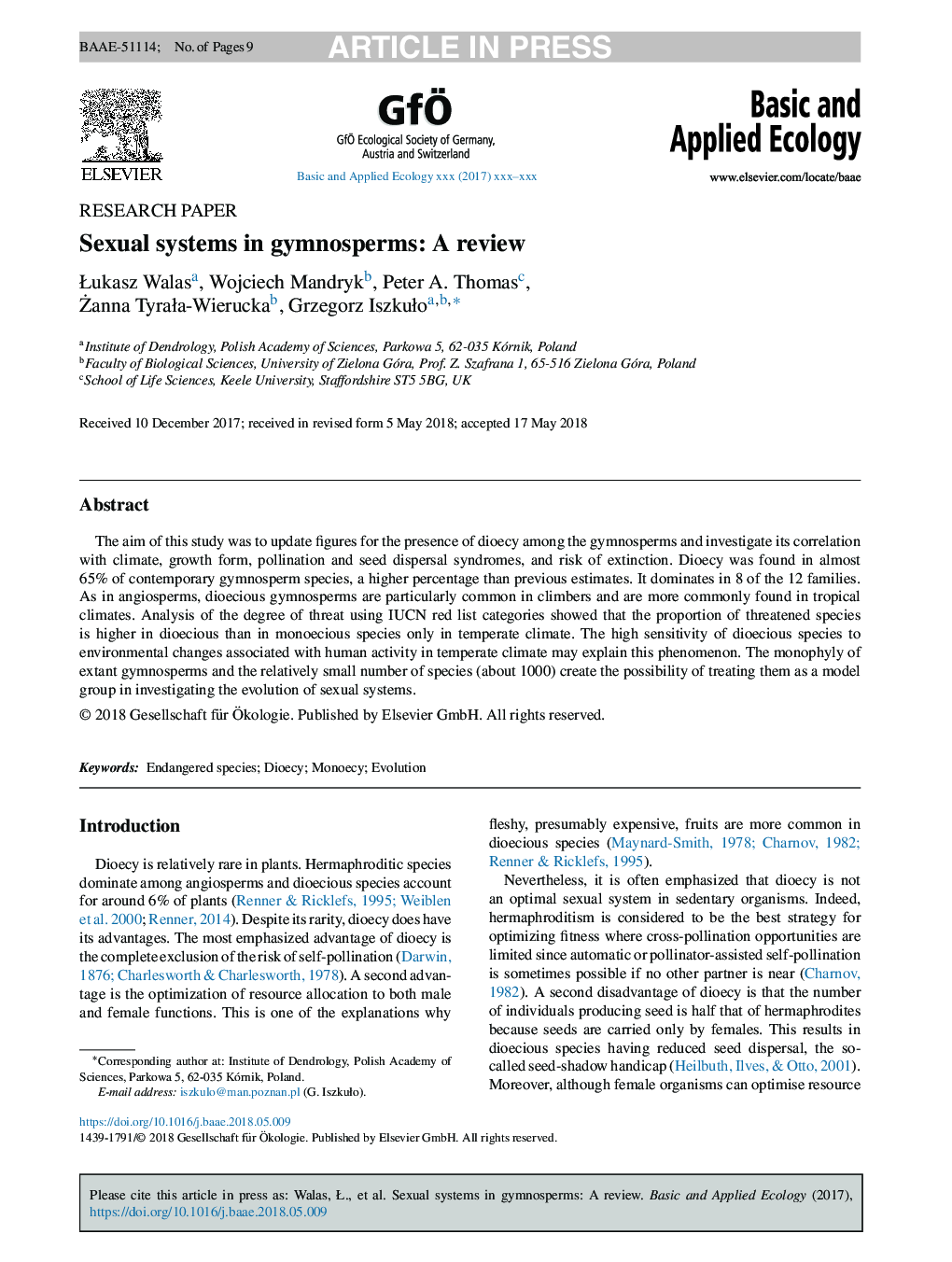| Article ID | Journal | Published Year | Pages | File Type |
|---|---|---|---|---|
| 10223330 | Basic and Applied Ecology | 2018 | 9 Pages |
Abstract
The aim of this study was to update figures for the presence of dioecy among the gymnosperms and investigate its correlation with climate, growth form, pollination and seed dispersal syndromes, and risk of extinction. Dioecy was found in almost 65% of contemporary gymnosperm species, a higher percentage than previous estimates. It dominates in 8 of the 12 families. As in angiosperms, dioecious gymnosperms are particularly common in climbers and are more commonly found in tropical climates. Analysis of the degree of threat using IUCN red list categories showed that the proportion of threatened species is higher in dioecious than in monoecious species only in temperate climate. The high sensitivity of dioecious species to environmental changes associated with human activity in temperate climate may explain this phenomenon. The monophyly of extant gymnosperms and the relatively small number of species (about 1000) create the possibility of treating them as a model group in investigating the evolution of sexual systems.
Related Topics
Life Sciences
Agricultural and Biological Sciences
Animal Science and Zoology
Authors
Åukasz Walas, Wojciech Mandryk, Peter A. Thomas, Å»anna TyraÅa-Wierucka, Grzegorz IszkuÅo,
